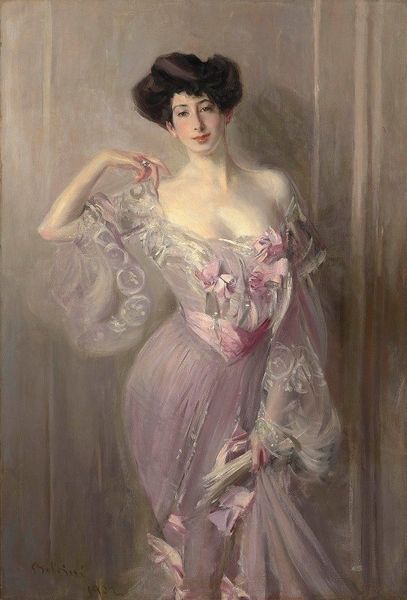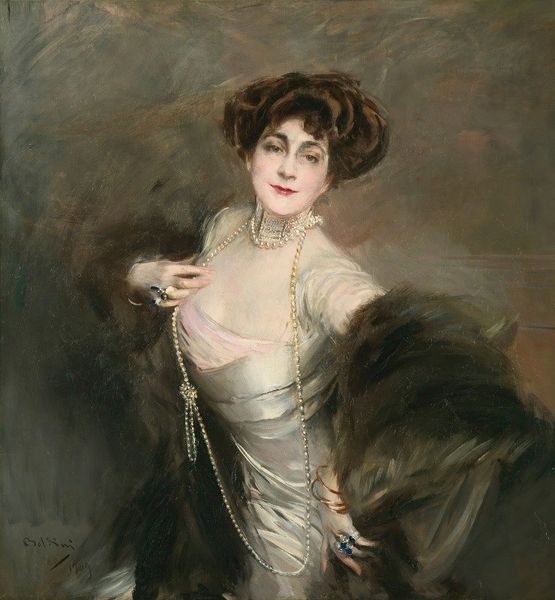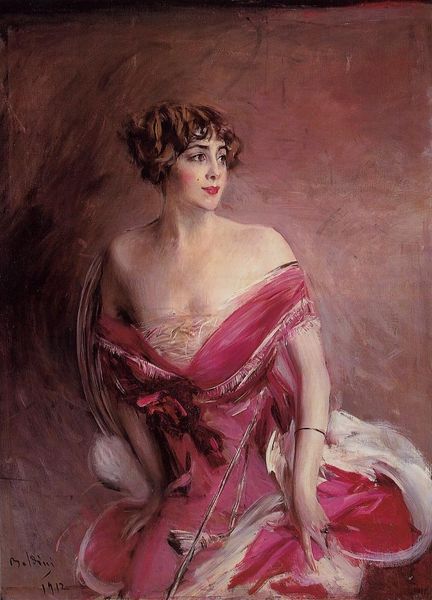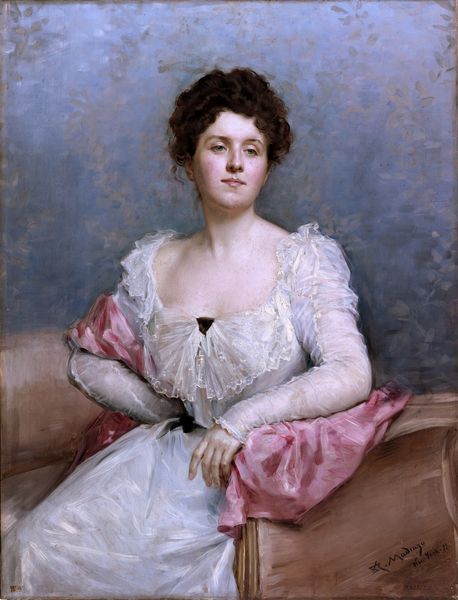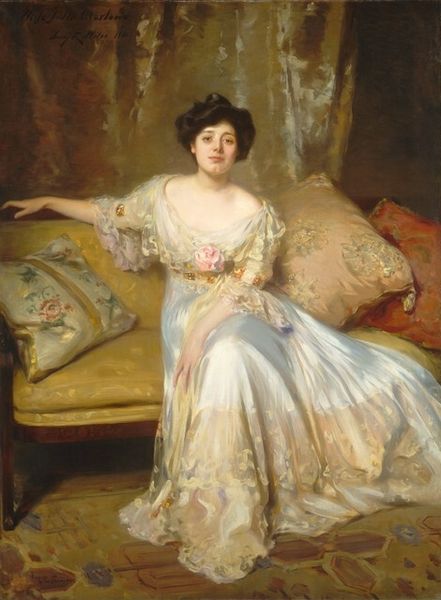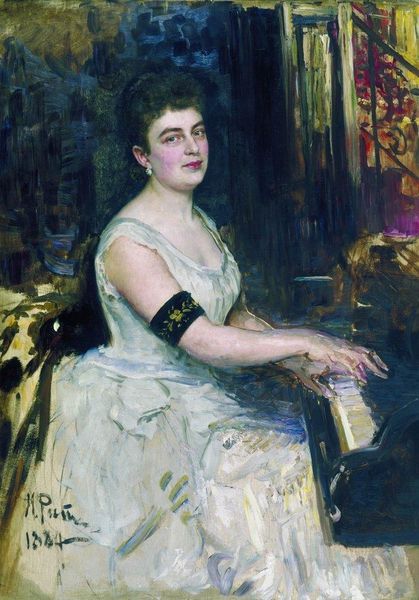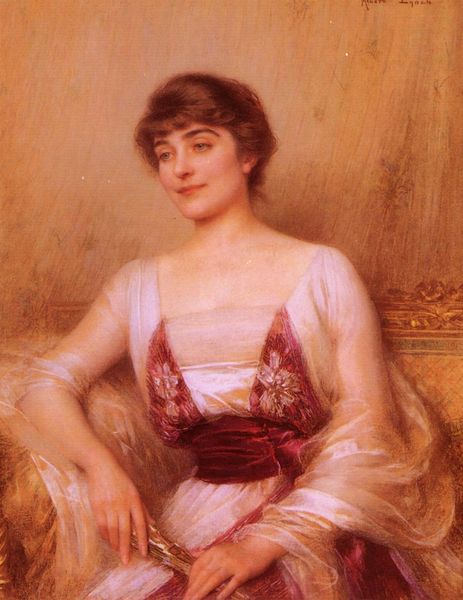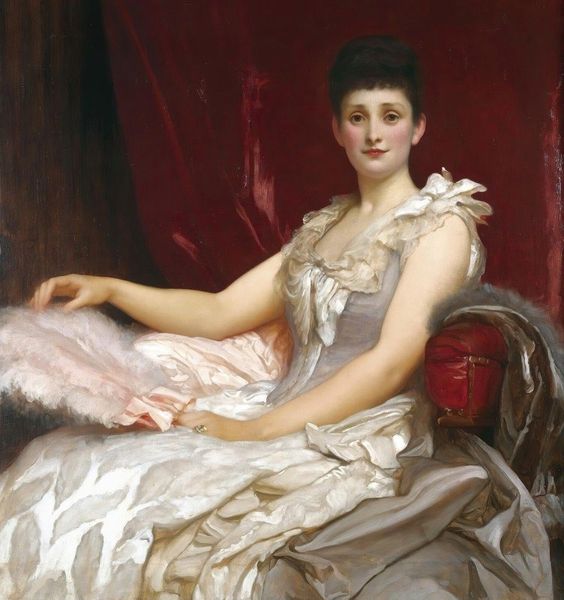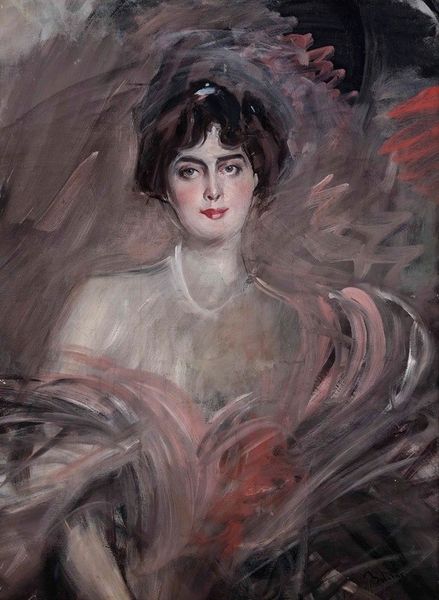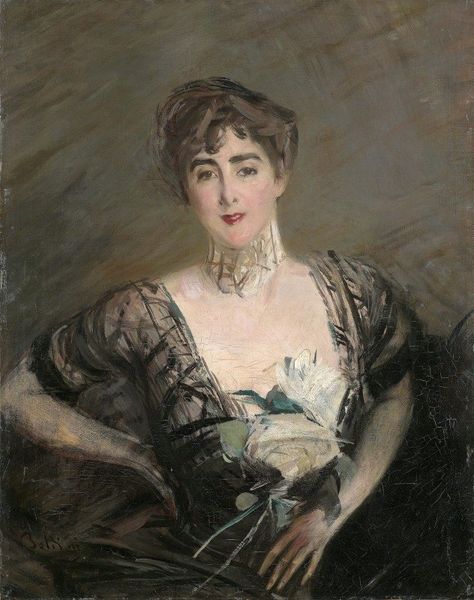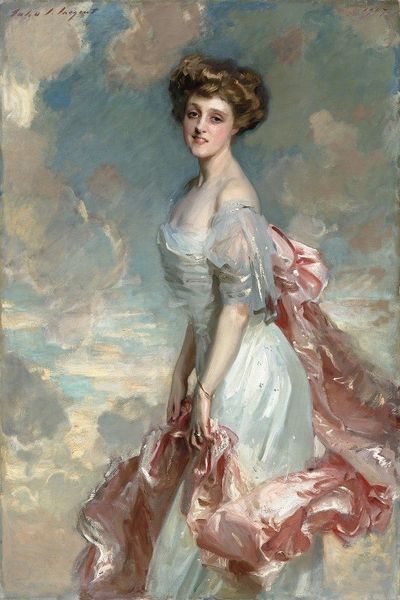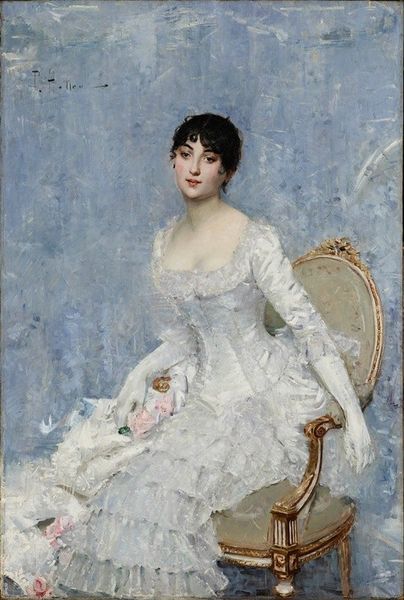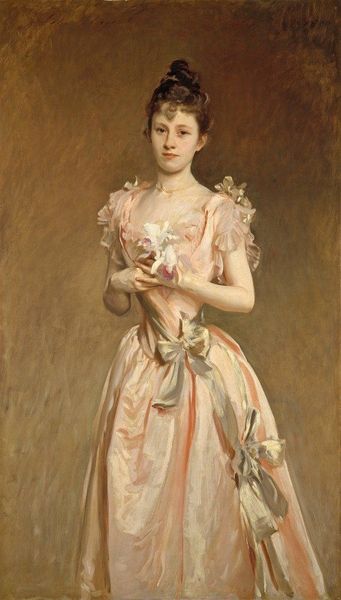
Copyright: Public Domain: Artvee
Editor: This is Giovanni Boldini's "Portrait of Lady Nanne Schrader, née Wiborg," painted in 1903. It’s oil on canvas and uses impasto techniques. I find the portrait has a soft, almost dreamlike quality. What symbols or meanings jump out at you? Curator: Well, the pearls, for starters. Pearls are often linked with purity and innocence, but they can also symbolize tears or hidden sorrows. Consider the way Lady Nanne gazes directly at us. Do you think there’s a melancholic undertone beneath the surface of her presentation of elegance? Editor: That’s an interesting point. I hadn’t considered a melancholic reading. Curator: Boldini uses these light, flowing brushstrokes to render her dress and fur stole, contributing to an image of aristocratic femininity. Consider her hand placement and the visible rings. Aren’t these overt indicators of class, marriage, and belonging? The floral dress underneath this diaphanous material lends an idealized almost romantic flair to the portrait. It calls back to simpler times. Editor: It seems she is consciously projecting an image, or perhaps several intertwined ones at once. The softness and the wealth are very intentional. Curator: Precisely! It shows how portraiture functions as a cultural mirror, both reflecting and constructing ideas about identity, particularly feminine identity at the turn of the century. Boldini captured more than just a likeness. Editor: I'm struck by how much thought goes into constructing these visual messages and how many readings are layered within this single artwork! Thanks so much. Curator: It has been my pleasure; the study of symbols helps us understand unspoken narratives and the layers of meanings embedded within a society’s consciousness.
Comments
No comments
Be the first to comment and join the conversation on the ultimate creative platform.
